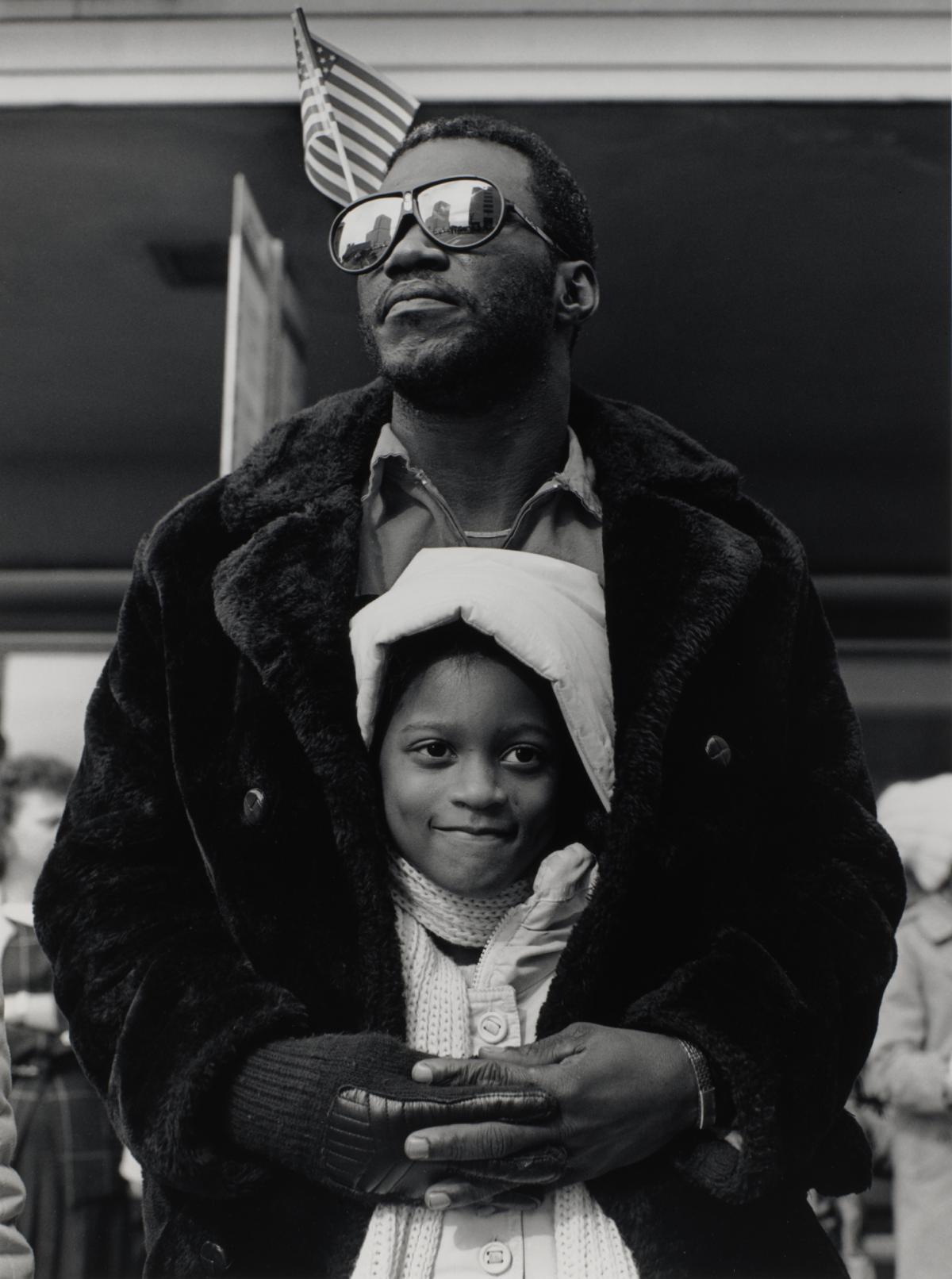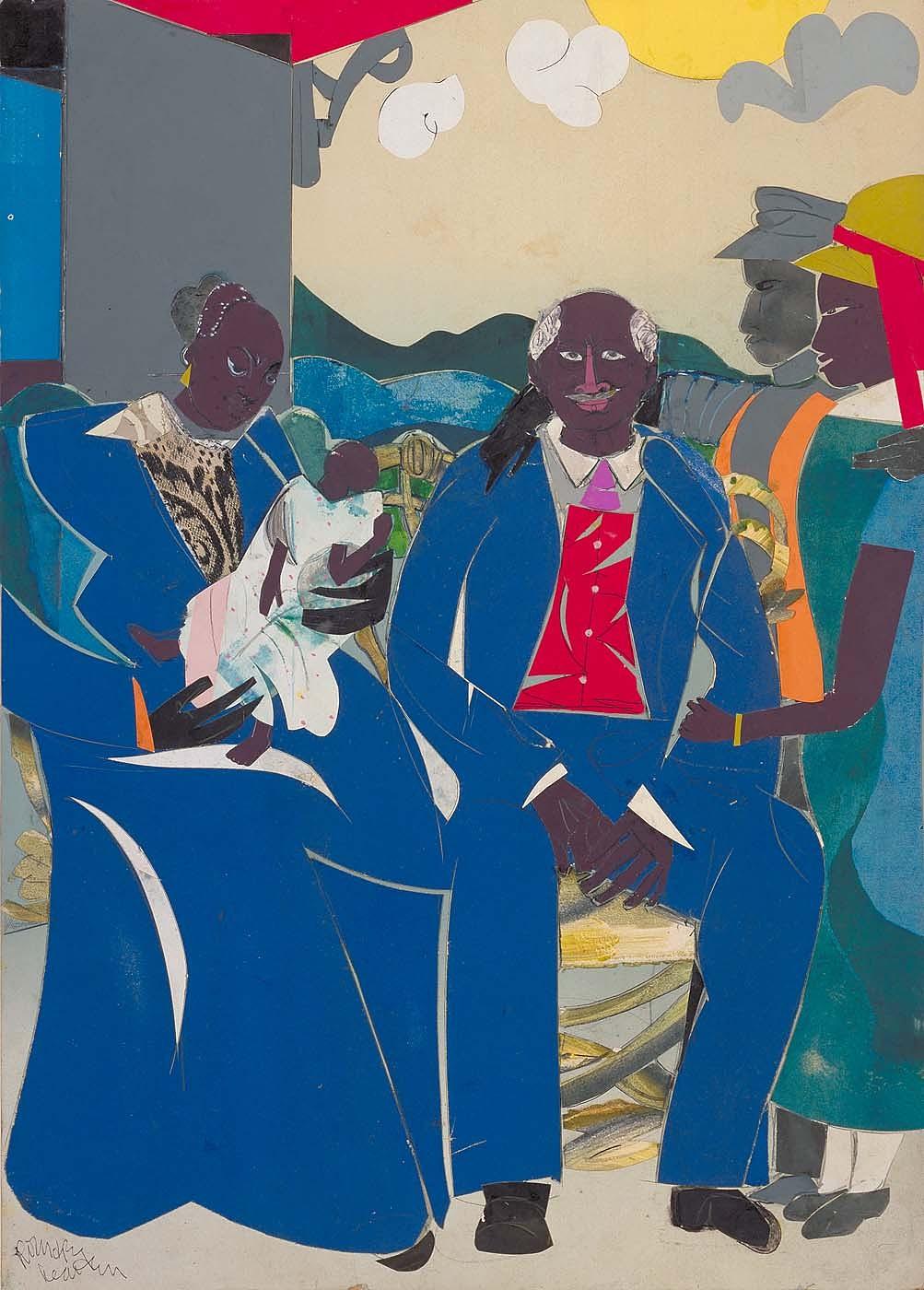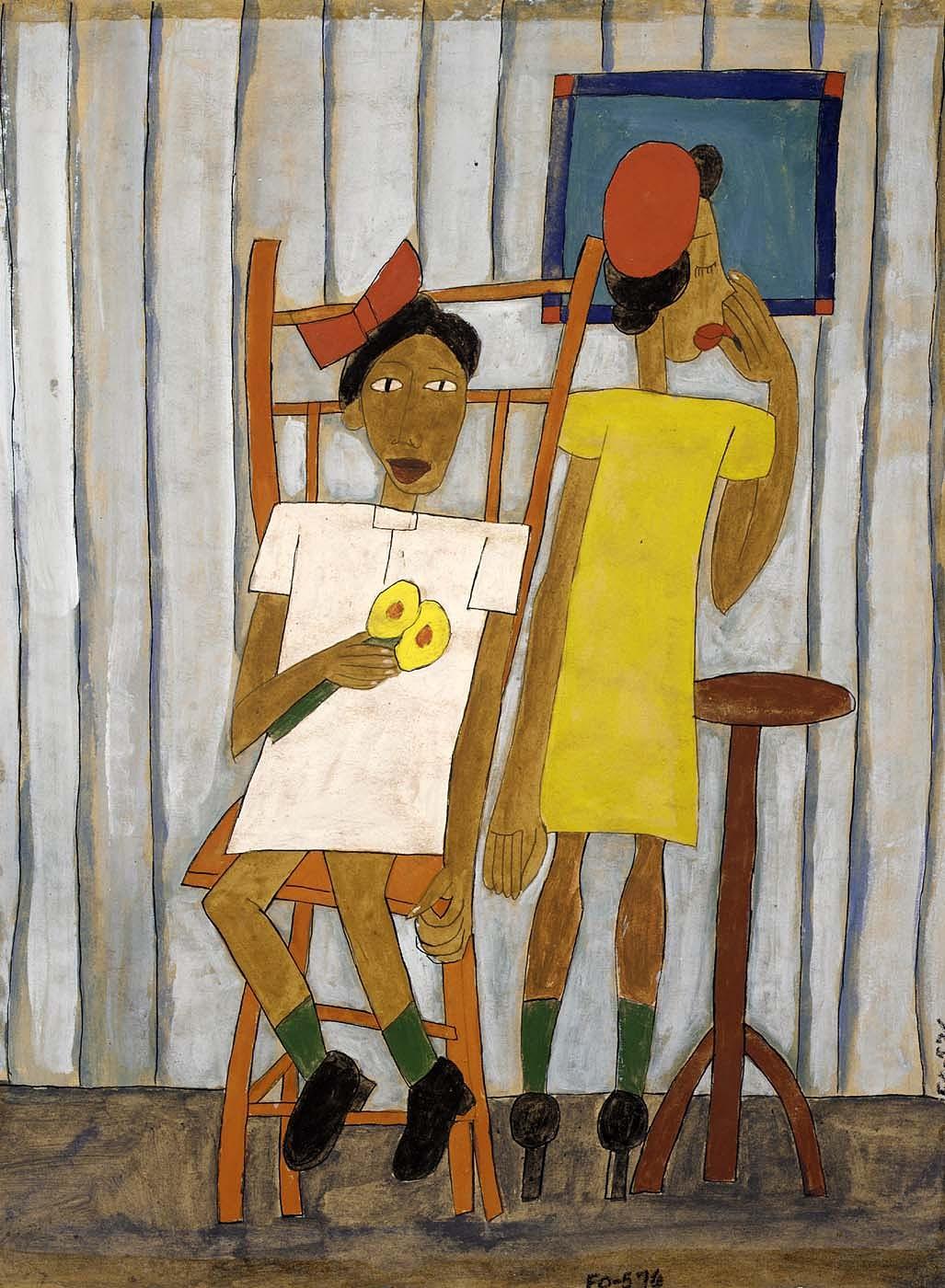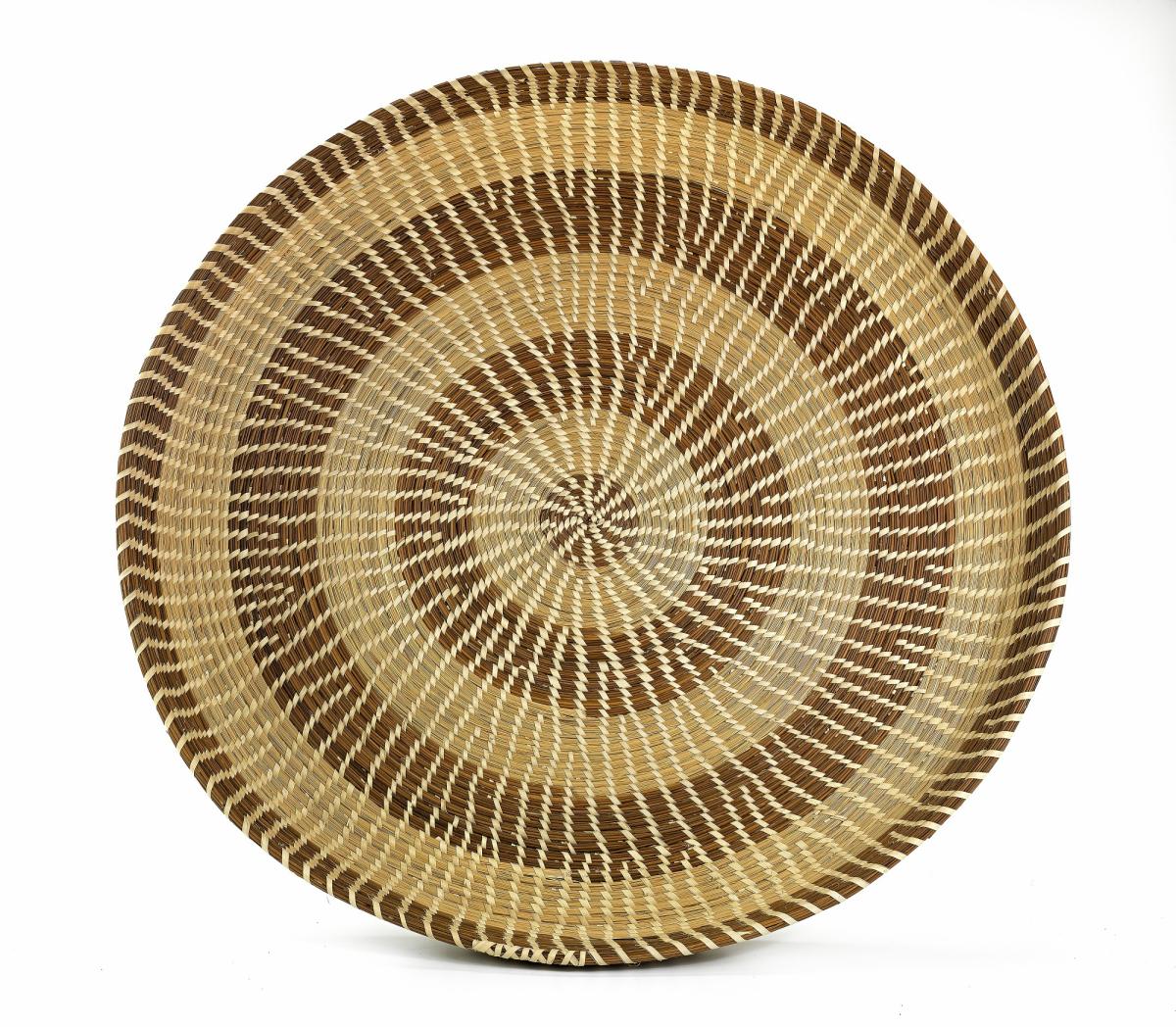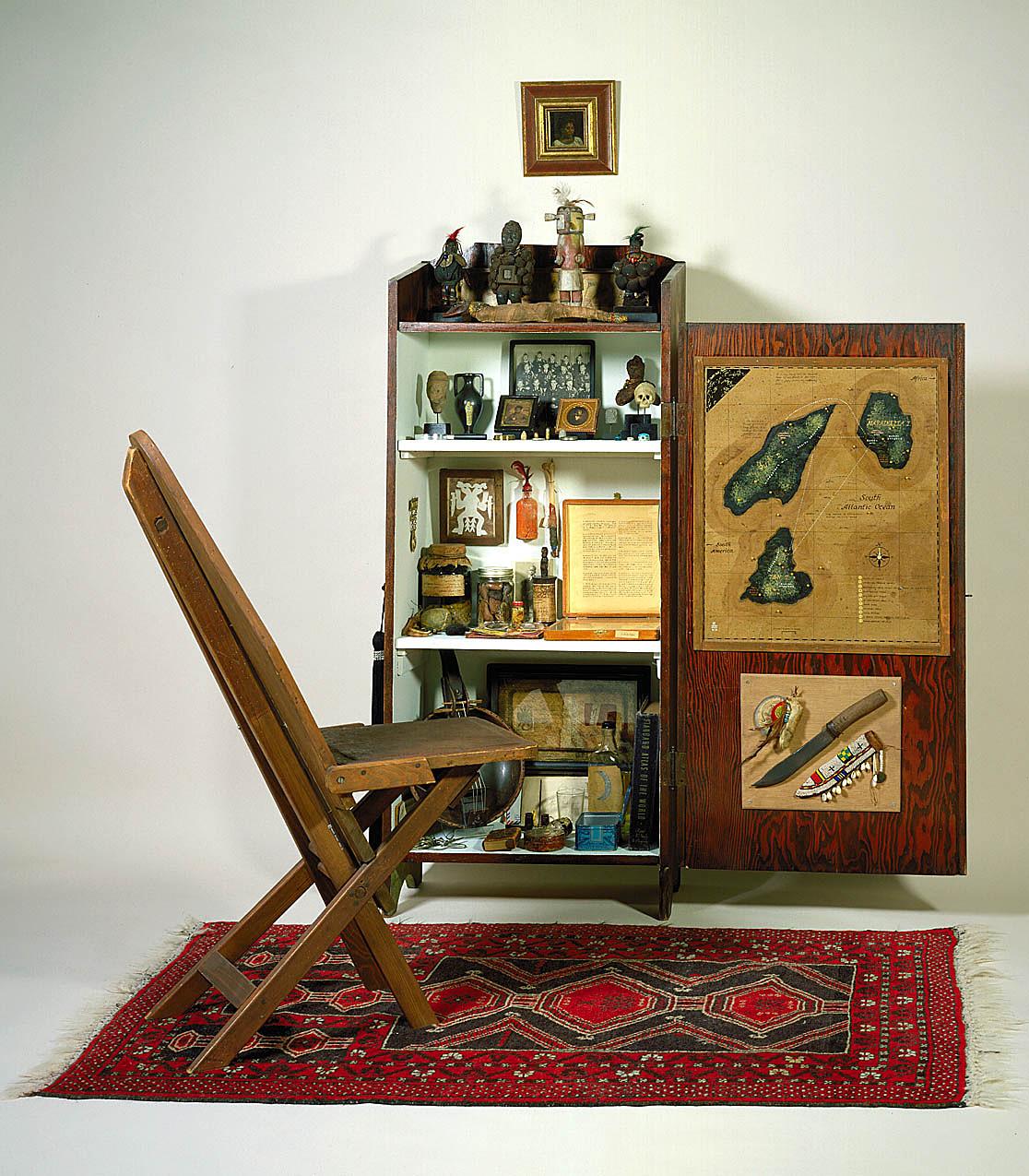In this post, we are sharing a selection of images by Black artists that explore the theme “The Black Family: Representation, Identity and Diversity.” Since 1928, the Association for the Study of African American Life and History (ASALH) has selected an annual theme for Black History Month to bring focus to a particular aspect of Black life in America. ASALH is an organization created in 1915 by Carter G. Woodson—known as the Father of Black History Month.
Family in art
“A unique commonality exists between young and old,” the artist observes, “because there is always a continuity between the past and the future. It is this commonality which I strive to depict in my work.” Eddie Hudnall Jr.’s photograph, The Guardian, shows a father enfolding his young daughter as they stand along a street reflected in the mirrored lenses of his glasses.
The overlapping forms of hands and arms in Romare Bearden’s Family reinforce the scene of family and generational bonding. The grandfather’s outward gaze connects the viewer with this scene of heritage and hope.
A mother and daughter, dressed to the nines, are ready for a night on the town, likely in Harlem. The mother is distinguished by her red beret, bright red lipstick, and high-heeled shoes, and the daughter by the bow in her hair, her white dress, and abstracted flowers.
Lynette Youson , a fifth-generation basket weaver from a Gullah community in South Carolina, began to sew scraps of grass at her great-grandmother’s side when she was only five, and continues this family tradition today. The Gullah are a group of African Americans living in the Southeast who maintain cultural, linguistic, and artistic traditions from West African ancestors.
Colonel Frank is an invented persona based on the artist’s father, who, she said, brought the world to her shy and introspective mother. The colonel also reflects Stout’s own search for a personal history.
In Familia del Mar, the gazes – of the father concentrating on straightening his nets, the mother who watches him work, and the baby facing the photographer – illuminate relationships within the family.
Artists in their own words
When artists visit SAAM, we always take a moment to ask for their perspective and add to our online video library of artist voices. Mark Bradford discusses his Amendment 8, and how abstraction and identity intersect in his practice. Mickalene Thomas addresses the importance of representation in art, especially at a national museum.
Mark Bradford
“I just thought “I was going to do abstract work,” but it was going to talk about race, class, culture, and all these things, but I was going to do it from an abstraction place, which gave me freedom. And then I was going to look outside. I wasn’t going to do this kind of hermetic, interior, clothes the world off, which is historically what we understand abstraction as being. I was going to have a relationship with the world, and with politics.”
Mickalene Thomas
“I remember looking at a William H. Johnson monograph and thinking at the time, “Oh, this is catalogue raisonne,” and thinking how his sensibility of his line, representation of his journeys and the people in his environment, and depicting his world, and depicting African American’s lifestyles, was a direct representation of who I was. It’s really important to me as an artist, to have a representation of myself, so that youth could see themselves in these particular environments like museums.”
Watch more "Meet the Artist" videos, including interviews with Lava Thomas and Nick Cave.
Explore more highlights from the collection including artworks spanning three centuries of creative expression in various media, including painting, sculpture, textiles, and photography.














